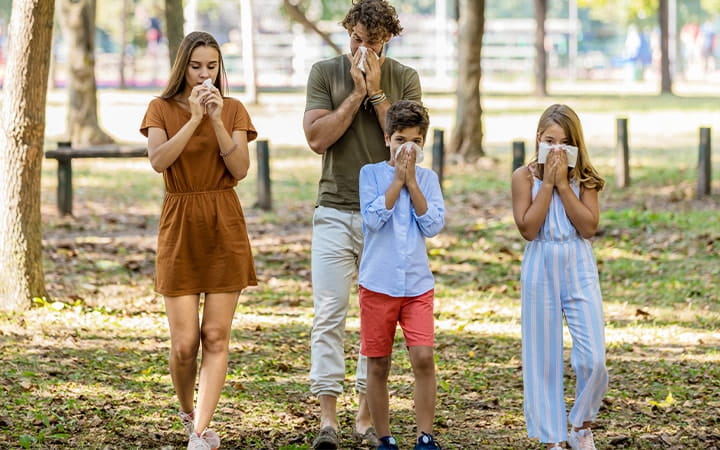Respiratory Viruses on the Rise? Yes, But No Need to Panic
July 28, 2023

With the COVID-19 pandemic essentially behind us, many people remain hyper-aware of respiratory symptoms. For some, the lingering fear that another novel virus like COVID-19 will emerge makes every sneeze or sniffle seem ominous.
“Although it’s true that respiratory illnesses have been on the rise recently, the viruses we are seeing are not new and, for most people, they aren’t a serious health threat,” says Keith Armitage, MD, infectious disease specialist and Medical Director of the University Hospitals Roe Green Center for Travel Medicine & Global Health.
“The two main respiratory viruses we’re currently seeing in patients are human parainfluenza virus (HPIV) and human metapneumovirus (HMPV), both of which have been around for a long time,” says Dr. Armitage. “Although the symptoms can be similar to influenza and COVID-19, these are very different viruses. And, in general, they present with milder symptoms.”
Symptoms of HPIV and HMPV
Viral infections of the respiratory tract, including HPIV and HMPV, often present with similar symptoms that may include:
- Runny nose and nasal congestion
- Cough that may or may not be productive
- Fever
- Sneezing
- Sore throat, headache, muscle aches
- Shortness of breath or wheezing
In most cases, the symptoms of a respiratory tract infection will resolve without treatment in one or two weeks. However, for some people – often the very young, the elderly or those with suppressed immune systems – these symptoms may progress to a more serious condition like croup, bronchitis, bronchiolitis or pneumonia and require medical care.
“Although they share some symptoms, the respiratory infections we’re seeing currently are very different from COVID-19 in several respects,” says Dr. Armitage. “COVID-19 was unique in that it had the potential to cause significant systemic damage to the body, affecting not just the lungs but the blood vessels, heart and nervous system. And these current viruses don’t normally do that. In addition, although any viral illness can result in persistent fatigue, post-infection syndrome with COVID is much more complex and long-lasting.”
Why the Uptick in Respiratory Illnesses?
During the two-plus years of the pandemic, human behavior was transformed. With masking, social distancing and more frequent sanitizing of hands and surfaces, viral illnesses became almost obsolete.
“During the height of COVID, there was virtually no influenza,” says Dr. Armitage. “However, because we were so under-exposed to viruses during the pandemic, our immune systems were not being constantly stimulated and strengthened, leaving us more susceptible to illness when normal environmental and social exposure resumed.”
Another reason for the statistical rise in respiratory infections may simply be that an increased awareness of respiratory symptoms is sending more people to the doctor; whereas in the past, they might have simply waited out the illness, assuming it was “just a cold” or a “touch of the flu.”
Diagnosis & Treatment of Respiratory Infections
Nasal swabs, viral panels and home tests are still useful in diagnosing COVID-19. Even with herd-immunity and only mild symptoms in most cases, early diagnosis is still important because there are effective treatments available. Antivirals such as Paxlovid and Remdesivir, have proven effective for treating those at high-risk of severe disease or complications. These medications are only effective for the treatment of COVID-19 and are not used to treat any other viral infections.
“Throat swabs or viral panels to confirm a diagnosis of influenza are also useful,” says Dr. Armitage. “Like COVID-19, influenza can be treated medically in at-risk people. The medication Tamiflu, when administered early, can lessen the severity of symptoms and shorten the duration of the illness. However, it is not effective in treating parainfluenza viruses, like HPIV.”
There are also tests to diagnose parainfluenza and other respiratory viruses, but this information is less useful because there are no medical treatments available; therefore, management of the illness will not change with a confirmed diagnosis.
Most respiratory viral illnesses can be treated at home with rest, fluids and over-the-counter medications for pain and fever. However, if symptoms such as breathlessness or fever worsen over time instead of getting better, it’s a good idea to call your doctor for further treatment recommendations.
Related Links:
The board-certified infectious disease specialist at the University Hospitals Roe Green Center for Travel Medicine & Global Health can help ensure that travelers of all ages stay healthy and safe during their journeys.


